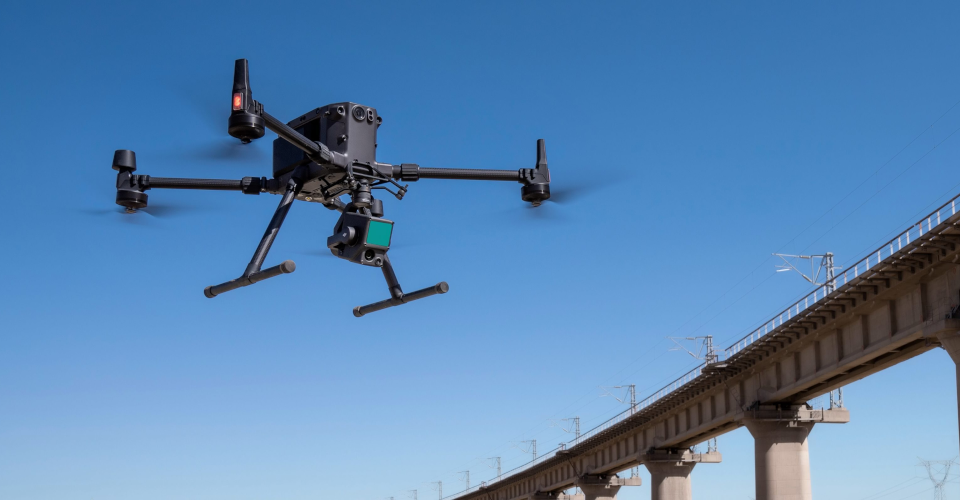An Overview of All Products Recently Launched by DJI
For those who haven’t kept track, DJI has just released a total of six products within the last month. This has been a surprise for many considering that we’re in the middle of a pandemic and that DJI has not made such a flurry of product launches in the past.
To help keep our readers updated about these new products, we have prepared this quick overview of all of them. These are not full-fledged reviews yet, but you should be able to gauge your interest in any of these products with these brief summaries.
DJI RS2
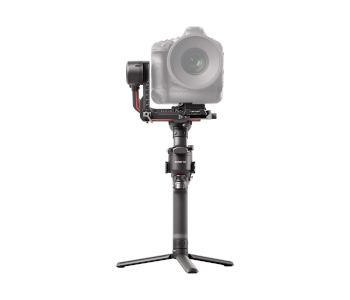
The RS2 is the follow-up to DJI’s massively successful Ronan S professional-grade handheld gimbal. The RS2 was launched alongside the RSC2, so there’s a chance of mixing the two up in terms of specs. To put it briefly, the RS2 is the more premium choice between the two, featuring heavy-duty construction and accordingly higher price tag.
The RS2 has proven to be a huge upgrade from the original Ronin S. Not only does it support a heavier payload of 4.5 kg (compared to about 3 kg for the Ronin S), but its carbon fiber construction has also made it lighter. According to DJI, the RS2 delivers the highest weight-to-payload ratio of any handheld gimbal product in the industry.
The RS2 also comes with the best battery that DJI has ever developed for the Ronin systems. Integrated into the BG30 grip is a battery with a max runtime of 12 hours. It can be charged independently as well, giving you the option to pack a spare battery.
Integrated on the grip of the RS2 is a full-color touchscreen interface right above a joystick, a record button, and a multi-purpose function button. This makes the control of the gimbal and shifting between the different modes a lot easier with the RS2, reducing dependency on a cumbersome smartphone app. There’s even a front-facing wheel for single-handed focus control.
With NATO-compatible RSA ports, the RS2 has almost unbridled compatibility with third-party accessories. This makes it even more suitable for professional use, especially for those who already have a range of accessories from the original Ronin S.
On top of solid construction, the RS2 is also a smart device. It comes with DJI’s signature Active Track 3.0 technology for seamless tracking of moving subjects. Its 3D Focus System uses time-of-flight sensors to automatically detect the distance of a subject, allowing for faster auto-focusing on highly dynamic environments. The RS2 can also remember pre-determined tracking paths should you need repeatable and choreographed shots.
The RavenEye feature comes with the RS2, which allows for remote viewing and control of the gimbal’s camera. With Force Mobile technology, the RS2 can transmit a 1080p live video stream up to 200 meters away with a latency of only 60 ms, all while allowing motion control of the gimbal through smartphone movement.
With a bevy of more advanced features and huge upgrades from its predecessor, the RS2 is a compelling purchase for anyone who has owned the original Ronin S. It’s the ideal gimbal setup for professional users, especially those who are accustomed to using big rigs with heavy cameras and several accessories.
DJI RSC2

The RSC2 is the smaller, more portable, and cheaper alternative to the RS2. The RSC2 folds down to a compact 7 x 7.5 inches bundle, making it ideal for when you are shooting on the go. The $300-price difference from the RSC2 is not too shabby, either.
Despite being smaller, the RSC2 is exactly the same weight as the RS2. It also has a reduced payload capacity of only 3 kg. While this capacity isn’t enough for cinema-grade cameras, it should be able to handle most mirrorless or DSLR cameras. With this in mind, the RSC2 appeals more to casual photographers or those who like to shoot vlogs with high-end equipment.
The successor to the Ronin SC features a bigger battery, better folding mechanisms, and a convenient OLED screen. While the screen does not provide a touchscreen interface (unlike the RS2), it’s still a great add-on for viewing which mode or pre-set your shooting in and the gimbal’s remaining battery life. This is a huge improvement over the LED indicators of the original Ronin SC.
Like the original Ronin SC, the RSC2 maintains the option to connect with a smartphone. The joystick, record button, and multi-purpose function button are still located right below the OLED screen. On the front side are the easily accessible focus wheel and a re-shaped trigger button.
The folding mechanism of the RSC2 has proven to be its biggest strength, allowing the gimbal to be used in six different orientations. You can use the RSC2 upright, underslung, in flashlight mode, or in the new ‘Sling’ mode. With the same stabilization technology found in the pricier RS2, the RSC2 delivers smooth cinematic shots with even more versatile camera setups.
The battery of the RSC2 delivers a maximum of 12 hours of power for the gimbal. It’s not a huge upgrade from the Ronin SC in terms of capacity, but the biggest difference is that the RSC2 battery supports fast charging – just 15 minutes of charging can deliver two hours’ worth of battery life.
The drawback of the RSC2 is that some of its best features are only accessible when it has been augmented with the proper accessories. Chief of these is the RavenEye transmission system which is the only way for the RSC2 to have the Active Track 3.0 feature. Force Mobile is still there by default, as it only requires a smartphone connection with the RSC2.
All in all, the RSC2 offers a massively upgraded experience compared to the Ronin SC. With a much lower price than the RS2, the RSC2 is an excellent gimbal for those who are used to working with lighter rigs or those who have more casual photography needs.
DJI Pocket 2

The Pocket 2 is the perfect device for today’s casual content creators. As the name implies, this is a pocket-sized all-in-one device with an integrated camera and gimbal. Compared to its predecessor, the Osmo Pocket, the Pocket 2 offers several subtle but effective upgrades.
On the surface, the Pocket 2 does not seem vastly different from its predecessor. This is a good thing in this case, as the compact design of the Osmo Pocket was already perfect. All the essential controls (plus a small reference screen) have been integrated into its tiny wand-like grip, although a paired smartphone may still be necessary if you’re looking for more granular controls and a wider viewfinder.
Audio quality was a hugely criticized area in the original Osmo Pocket, so we’re happy to say that this is an aspect that the Pocket 2 has hugely improved on. Using DJI Matrix Stereo technology, the Pocket 2 now has four strategically placed microphones to avoid having audio muffled by your hand, as well as a directional audio feature (called SoundTrack) that emphasizes audio pickup on the direction where the camera is faced. This feature is so smart that it can even simulate the effect of zooming on a sound source when you zoom in with the camera.
As with the Osmo Pocket, the Pocket 2 can record 4K videos at 60 fps with a 100 Mbps bitrate. It comes with a 1/1.7-inch sensor and a 20mm f/1.8 lens, both of which are better than its predecessor’s hardware. The camera’s ISO range is the standard 100 to 6400. More impressively, the Pocket 2 camera provides up to 4x lossless zoom at 1080p and 2x on 4K. DJI has promised an upgrade to HDR compatibility via an upcoming firmware update.
The Pocket 2 does NOT have a swappable battery, nor does its built-in battery have any significant upgrades to that of the Osmo Pocket. Perhaps this was the only way to keep the Pocket 2 lightweight and compact, but it is still a disappointing area. Should you need a power boost, the Osmo Pocket can be hooked up to an external power bank.
As with the Osmo Pocket, pairing the Pocket 2 with the DJI Mimo app allows for quick editing and publishing of your videos. Once the videos have been transferred to your phone (either wired or wirelessly), you can easily add music, filters, or break them down into shorter clips before sharing them to your preferred social media channels.
This device is perfect for those who want an all-around recording solution that avoids the ‘shaky-cam’ effect of recording with just your smartphone. With a compact design and upgraded camera features, we don’t see any reason for the Pocket 2 to be not as successful as the original Osmo Pocket.
DJI Mini 2
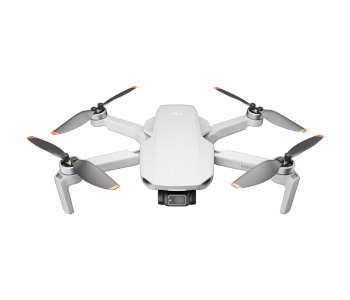
Barely a year after the launch of the DJI Mavic Mini and we already have its second iteration – the Mini 2. As with the original, the weight of the Mini 2 clocks in at 249 grams, which is just below the FAA registration requirements.
Just to help your recall, the Mavic Mini was one of the more impressive drones of its time. Despite the size and weight, it had a 2.7K camera and a 3-axis gimbal. The Mini 2 trumps these specs with a camera that can record 4K video at 30 fps can capture photos in both JPEG and RAW formats. It also boasts of a lossless zoom of up to 2x at 4k and 4x at 1080p. For reference, the original Mavic Mini had no zoom features at all.
Another addition to the Mavic 2 which should excite photographers is the Auto Exposure Bracketing (AEB) feature. This makes the shooting of photos in challenging lighting a lot easier. The series of photos taken at different exposure levels can then be stitched together in post-processing to create a composite photo akin to what one would get with an HDR feature.
The Mavic Mini’s reliance on Wi-Fi communication was also one of its weakest points, effectively limiting its range of transmission. This is no longer a problem with the Mini 2, as it comes with DJI’s signature OcuSync 2.0 transmission technology. This extends the range of the Mini 2 to 10 kilometers, although you likely won’t be able to fly that far and still maintain a visual line of sight. The more important benefit of this upgrade is the ability to auto-switch between two different frequency bands, which should help avoid signal dropouts.
The controller that comes with the Mini 2 resembles the redesigned controller of the Mavic Air 2. This controller design looks a lot cleaner and the positioning of the paired smartphone above the control sticks feels more intuitive. Like the Mavic Mini, the Mini 2 needs to be paired with the new DJI Fly app.
Despite all the upgrades, the Mini 2 retains its remarkably compact design that fits on the palm of your hand and isn’t much larger than a smartphone. Again, this is a drone that appeals greatly to drone pilots who prefer to not have to go through the FAA registration process. With more powerful camera features, the Mini 2 inches closer to being a camera drone that will appeal to professional users. Just take note that all drones used for commercial reasons have to be registered, even if they weigh below the 250-gram minimum.
DJI Zenmuse P1 Photogrammetry Solution
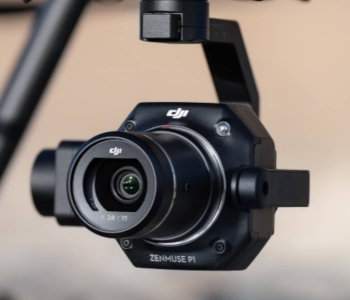
While photogrammetry has long been a lucrative field for professional drone pilots, there aren’t a lot of options for specially designed rigs for drone photogrammetry. With the Zenmuse P1, DJI has become one of the few major brands to offer such equipment. This custom payload was engineered to be used with the DJI M300 RTK drone.
The Zenmuse P1 is basically a full-frame sensor camera designed for faster and more accurate optical data for photogrammetry. The powerful camera can capture 45 MP stills with 4.4-micrometer pixel size and can be outfitted with either 24 mm, 35mm, or 50 mm lenses. According to the specs, the camera can capture a photo every 0.7 seconds and has a global mechanical shutter that synchronizes time across all modules using the new TimeSync 2.0 system.
Even without Ground Control Points (GCPs), the Zenmuse P1 can deliver data accuracy at 3 cm. horizontally and 5 cm. vertically. This is good enough for most mapping applications. Moreover, the Zenmuse P1 on the M300 RTK is one of the most efficient mapping setups and can cover up to 3 square kilometers on a single flight.
The Zenmuse P1 provides end-to-end photogrammetry mapping solutions from survey planning to data management. Through the DJI Terra software, users can quickly designate an area to survey or pre-determined flight paths for the drone to follow. Once the data has been collected, the data quality and accuracy can be instantly checked even while on the field by checking the number of images collected and the status of RTK positioning. The Zenmuse P1 even streamlines data management by making sure that files are organized based on Mission Name and Time and that the metadata of each image contains intrinsic and extrinsic parameters.
Just like most of the other Zenmuse products, the Zenmuse P1 was designed for professional use. If you’ve been doing photogrammetry for a long time, then you might want to consider upgrading your rig to the P1. It’s not cheap but can greatly improve the accuracy and efficiency of photogrammetry surveys.
DJI Zenmuse L1 LiDAR Solution
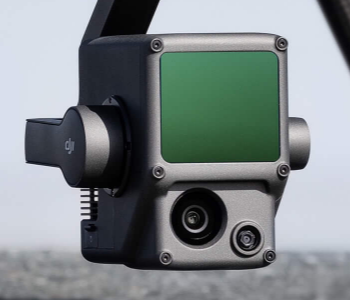
Along with the Zenmuse P1, DJI also launched a counterpart for those who prefer mapping via LiDAR – the Zenmuse L1. Again, this is a module that has been designed to work with the DJI M300 RTK drone and the DJI Terra survey planning software.
What makes the Zenmuse L1 different from most other LiDAR sensors is that it combines a LiVOX LiDAR module with a more conventional 20 MP RGB camera with a 1-inch CMOS sensor. This means that the Zenmuse L1 captures visual data simultaneous with the point cloud data, generating 3D models that are true-color point clouds. This is then combined with a high-accuracy IMU that accurately gathers data on the camera’s position and orientation.
The result is a highly accurate data collection system that can assure up to 5-cm vertical accuracy and 10-cm horizontal accuracy. While the survey is ongoing, the drone pilot can view a live preview of the point cloud as it is generated, allowing them to step in right away if there are data deficiencies. The Zenmuse L1 on the M300 RTK can cover an area of 2 square kilometers on a single flight. This is a little smaller than the coverage area of the P1 likely on account of the heavier L1 and its more demanding data collection needs.
A huge advantage of LiDAR technology over photogrammetry is that it does not rely on visibility. The Zenmuse L1 can be used to gather data at night and even has IP 44 construction to protect its internal components in humid or foggy environments. After the survey, data processing is effortlessly done through the DJI Terra software.
In terms of the quality of digitized map data, no technology can rival LiDAR. We’re glad to see a major brand like DJI enter this field, as it potentially can lead to LiDAR technology becoming more accessible and affordable.
Final thoughts
Perhaps it was less than ideal for DJI to launch all these products almost simultaneously, but we assume that logistical challenges came into play because of the pandemic. In any case, these are all excellent products and each one deserves its moment in the spotlight. This guide was made for those who may have missed the announcement for any of these product launches, which is easy to do with so much going on nowadays.
Which product are you most excited to get? Let us know in the comments!

